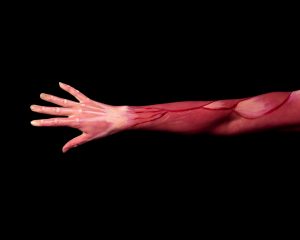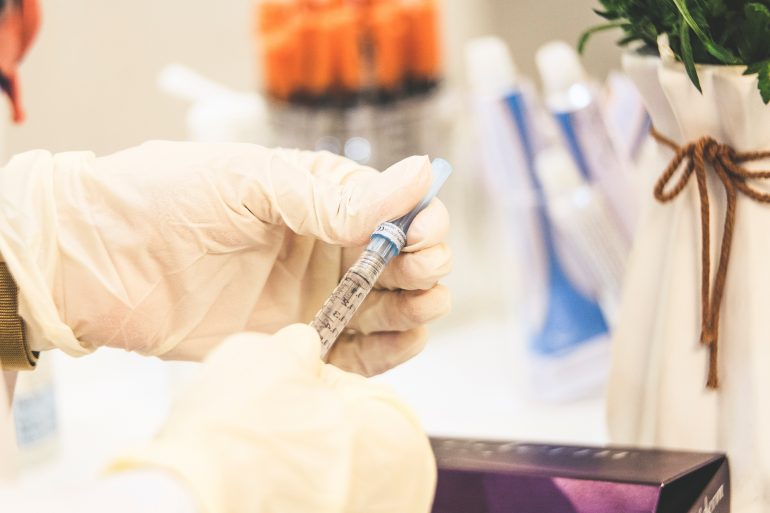Kirra lugged cold, heavy oxygen tanks into her house, sent by a company hired by Kaiser Hospital. Beside her, Kirra’s mother drew in ragged breaths as she struggled up the stairs. After spending a month in quarantine with Kirra’s two younger sisters, Kirra’s mother still experienced bodily fatigue, muscle weakness, and difficulty breathing — all symptoms of COVID-19.
After the three family members were deemed non-contagious by CDC guidelines, Kirra relished in the little moments she got to spend with them. She could once again hug her mother and hang out with her sisters, even if they were still recovering from longer-lasting symptoms. Kirra and her father, who had been caretakers for their sick loved ones, felt a wash of relief and exhaustion.
The moment was unfortunately fleeting. The oxygen tanks Kirra was carrying were for her father.

Just two weeks after Kirra’s mother and sister completed quarantine, her father also contracted the virus. He had been hit hard enough to require Kaiser Hospital to monitor his oxygen saturation, or the level of oxygen carried by his red blood cells. Their house, feeling normal for the first time in a month, was now littered with oxygen tanks that Kirra and her mother lugged inside, her breath still hitching. Eventually, her father’s condition worsened, and he was admitted into a densely populated intensive care unit (ICU) where he received lifesaving medical support.
In the beginning of July, both Kirra’s mother and sister were symptomatic with COVID-19. After they recovered, Kirra’s father became sick in August from a separate exposure to the virus. Both times, Kirra had tested negative and in turn, stepped up as a caretaker for her family. Kirra’s perspective offers a look into the widespread effects that COVID-19 has on one’s physical and mental health, and how an unseen responsibility of caretaking is being placed on many young adults.
While COVID-19 poses less of a threat to younger people compared to the elderly, it is a misconception that young adults are in the clear. In just one week, COVID-19 has been the cause of death for 11,421 individuals under 45 years old in the United States. These statistics only reflect lives that were lost, and not those who are currently hospitalized or at quarantining at home.
Kirra experienced the sheer intensity of COVID-19 in her own household when her middle sister, only 19 years old, experienced symptoms similar and as severe as her mother, who is in her mid-40’s. Quarantined together in one room, they experienced symptoms like fever and altered sense of smell and taste. However, the first and most severe symptom was body aches. Kirra would facetime her mother and sister for moral support, and find that they would have to “lay on the floor” in order to ease their pain.

Myalgia, or the muscle pain Kirra’s mother and sister experienced, affects around 36% of COVID-19 patients. When a person encounters a pathogen like the coronavirus for the first time, their innate immune system is activated. The innate immune system is inherited when a person is born and works indiscriminately against any and all pathogens by increasing the levels of certain molecules like Interleukin-6 (IL-6), a process called upregulation.
Molecules like IL-6 cause the rapid synthesis of certain proteins that cause inflammation and fever. Since higher internal temperatures are not suitable for most microorganisms, these changes help the body fight against pathogens. However, uncontrolled inflammation caused by too much IL-6 upregulation has been shown to cause muscle and joint pain. It is believed that this mechanism of IL-6 upregulation during coronavirus infection is what causes myalgia in COVID-19 patients, but research is still ongoing. Some research is focused more on improved pain management for current COVID-19 patients, as myalgia causes debilitating chronic pain, as seen in Kirra’s family.
People with COVID-19 sometimes also experience altered smell, a symptom called anosmia, which in turn affects one’s sense of taste. For Kirra’s mother and middle sister, foods they would normally enjoy, like strawberries, garlic, and cooked onions, would taste rancid.

Normally when Kirra’s mother cooked with garlic, odor molecules waft off her pan and travel up through the nasal canal in her olfactory organ — her nose. When the odor molecules reach the nasal cavity, they will bind to one odor-binding protein out of hundreds. These proteins are located on the surface of olfactory receptor neurons, whose role is to convert the chemical signal of garlic molecules into an electrical signal. This signal can then be recognized and processed by the brain through a process called chemosensation, telling Kirra’s mother that what she is cooking is in fact, garlic.
Since smell handles 95-99% of chemosensation, while taste only accounts for the small leftover percentage, is it easy to see how disturbing one’s olfactory mechanism can throw off perception of food. Any blockage or impairment to the olfactory mechanism can cause anosmia; however, which specific step altered by COVID-19 has yet to be discovered.

Managing these symptoms was not so easy. Kirra explains, “We had this new challenge as caretakers: what can we actually feed them that they will be willing to eat?”. Downstairs in the kitchen, Kirra would cook meals based on her family’s changing diets. After putting on a mask, she would drop off her family’s food on a chair she placed outside of the “quarantine room” along with a small knock or text. When she left the area, her family would take the food inside to eat.
However, the experience was different with Kirra’s father.
After Kirra’s mother and sister ended quarantine and her father became sick with COVID-19, Kirra would go by his room an hour after dropping off his meal and his food would still be there. “I think it was because he was so exhausted he didn’t even make it to his door,” Kirra says. It would take some time, but eventually she’d come across an empty plate. “He had to force himself to eat,” Kirra explains, “because he knew that was one of the only ways he was going to get better.”
Quarantining alone while in pain was very mentally difficult for Kirra’s father. Kirra elaborates, “You don’t think about how it is to be all by yourself, not seeing anyone” while dealing with life-threatening symptoms. In turn, Kirra and her mother became a “constant source of motivation” for him despite the situation. Kirra walked her father through very difficult conversations regarding his mortality, and while her presence was a huge emotional support, the line between caretaker and loved one blurred. “I’m an adult, but I’m not an adult to my parents,” Kirra says, “And during this time, I really had to assume this ‘adult position’ for my dad.”

What kind of toll does that place on the caretaker, a young adult who must assume such a role for their parents? Kirra, a recent community college graduate, was coping with her own personal challenges. During her time as a caretaker for her family, she was also quarantined in her house. Dealing with the effects of isolation, she chose to focus on her family’s recovery while she put her mental health “on the back burner”. One saving grace, Kirra explains, was that university “wasn’t an extra stressor at the moment” and she could focus on her family’s recovery.
Young adults are being asked to handle these different sources of stress while also striving for an education. As Kirra’s perspective demonstrates, the impact of the pandemic is startling wide. One can hop into a Zoom meeting with their camera off, but have a family to take care of on the other side. When our peers are grateful for educational reprieve in the face of medical circumstances, it indicates there’s a lack of accomodation expected out of the university system. Acknowledgment of this issue and amplification of stories like Kirra’s are necessary as we continue our online education and end our first full year in quarantine.
Kirra gave permission to display her identity in order to raise awareness about the intricacies of caretaking for family with COVID-19. Kirra, thank you for allowing me to share your story and experiences.
Sources:
- https://www.cdc.gov/coronavirus/2019-ncov/symptoms-testing/symptoms.html
- https://www.cdc.gov/coronavirus/2019-ncov/if-you-are-sick/end-home-isolation.html#:~:text=If%20you%20continue%20to%20have,for%20COVID%2D19.
- https://www.fda.gov/consumers/consumer-updates/pulse-oximeters-and-oxygen-concentrators-what-know-about-home-oxygen-therapy
- https://www.rivcoph.org/Portals/0/Documents/CoronaVirus/Jan2021/Dashboard/3/EMD_COVID-19_Metrics_Public_Dashboard_01-14-2021.pdf?ver=2021-01-15-154738-483×tamp=1610754473034
- https://www.cdc.gov/coronavirus/2019-ncov/need-extra-precautions/older-adults.html
- https://www.cdc.gov/nchs/nvss/vsrr/covid_weekly/index.htm#AgeAndSex
- https://www.cdc.gov/coronavirus/2019-ncov/symptoms-testing/symptoms.html
- https://www.hopkinsmedicine.org/health/conditions-and-diseases/myalgia
- https://www.niaid.nih.gov/research/immune-system-overview
- https://www.ncbi.nlm.nih.gov/pmc/articles/PMC4176007/
- https://www.ncbi.nlm.nih.gov/pmc/articles/PMC4786079/
- https://www.ncbi.nlm.nih.gov/pmc/articles/PMC7407489/
- https://www.hopkinsmedicine.org/health/conditions-and-diseases/smell-and-taste-disorders
- https://www.ncbi.nlm.nih.gov/pmc/articles/PMC7488171/
Image Sources:
- Featured Image: https://unsplash.com/photos/2rrsfMN4hn8
- https://unsplash.com/photos/KDd7jJ3TeiA
- https://unsplash.com/photos/dT33Pbtp65g
- https://unsplash.com/photos/3D43SBDDkAc
- https://unsplash.com/photos/s9CC2SKySJM
- https://unsplash.com/photos/FkfTI_s18Ww


